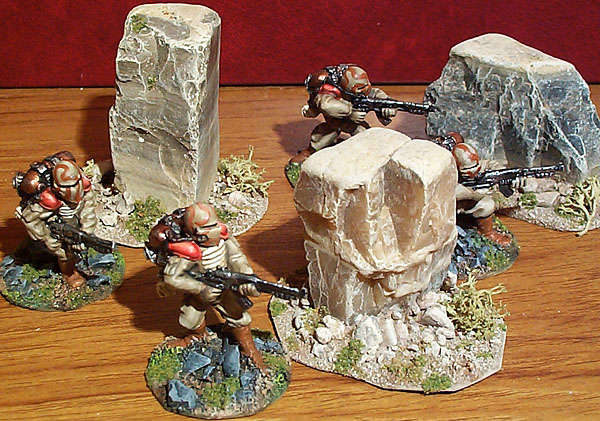|
|
©1999-2003. All rights reserved. |
Rock Pillars
There's nothing so reassuring as a big piece of rock to get in the way of the bullets, although ricochets can be a problem. The hardest part about making these is finding the stones. Apart from
that these are remarkably quick bits of scenery to make and the stone
gives the pieces a satisfying weight. These particular ones came from
a Greek beach, but beaches and rivers are not generally too good - the
stones tend to be heavily rounded by tumbling in the water.This looks
unrealistic for large rocks which in reality are usually much craggier.
The figures hiding behind the rocks are from Alternative Armies, but
I'm afraid I don't know what the range is called.
Construction
| |

©2000. All rights reserved.
| ||

